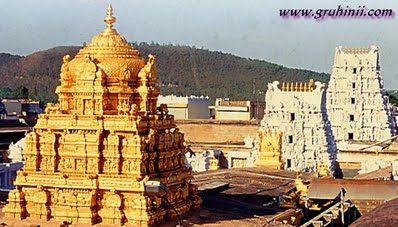1932—The critical situation of Andhras in Mauritius.(Source: ‘Indians in Mauritius”)
This article must be of special interest to all Andhras. It tries to give the details of Andhra life in Mauritius. As observed by Mr Pydayya earlier, the Indian population in this island in 1930 was about 280,000 consisting of North Indians, Andhras, Tamils, etc. Unfortunately, there was no statistics showing the composition of Indian population according to provinces or communities. But the following estimate was not far from correct: North Indians (105,998), Andhras (55,000), Tamils (50,000), Muslims (47,000), Marathas and Bengalis (23,000), totaling 280,000.
The author recalled that in his letters to theTrilinga and the Andhra Patrika in 1929, he depended for his figures on the 1929 census, he gave the total Indian population as 265,000. He also divided the figure as follows: North Indians 90,000, Andhras 55,000; Tamils 50,000, Muslims 47,000 and Marathas and Bengalis 23,000. In order to discover the name of the first Andhra immigrant and the year, he looked forward to the assistance of Mr. Rajabally, Assistant Protector of Immigrants. But did not succeed. He relied mainly on a few Andhras who were born on the island who were 60 or 70 years old, he even concluded that their first batch might have arrived here in around 1860. (First batch of Andhra immigrants arrived in 1935). The country’s non-Andhras generally called themCoringees, whereas, the knowledgeable ones called them Telugus. The Andhras resented being called Coringees, a pejorative term, reminding them of indenture which has long been abolished. (The first batch of Indian emigrants of Telugu origin hailed from the then port of Corringa, in the coast of Andhra Pradesh which was later destroyed by a severe tidal waves and left to oblivion). Sri Narasimha Dass and Appalasami Jogannah held several protest meetings on this point and it was to be expected that with more propaganda, the word Coringee would have a decent burial. Similarly, the North Indians and others were once called Malabaris; but as a result of strong protest, this pejorative term has almost disappeared.
Like the other Indians, the Andhras were widely scattered in the island. Very few lived in towns like Port-Louis while some hundreds inhabited the villages. The bulk of the Andhras resided on sugar estates. In towns, they were traders or domestic servants. In villages, they were peasant-proprietors or agricultural labourers. On sugar estates, they constructed houses for themselves or for tenants, stables for cows or bullocks and even own bullock carts for conveying sugar-cane to the Factory. Cane was sold either directly to the factory-owner or to traders on contract, be they Indians or not. There were also Andhras living on sugar estates as labourers, mill-drivers, boilers, sirdars, etc. The working conditions, status and treatment of the Andhras did not differ from those of the others.
ant_carry_leaf_md_whtant_carry_leaf_md_wht
Though the Andhras had been at that time living in Mauritius for nearly half a century, it was unfortunate that there was not a single school where Telugu was taught. Night schools were often set up to teach up to the stage of Pedda Balasiksha but they closed down as soon as the course was over. The teachers were not qualified, as they had, but a smattering of Telugu only. The mother tongue was not properly preserved. The object in learning it was merely to be able to take part in Bhajans or Telugusatakams. Large Telugu schools were not possible, for most of the Andhras prefered their children to be taught either English or French so that they might easily get jobs. The vernacular was studied only for the sake of being able to read the sacred books, etc. At the age of six, Andhra children attended the government primary schools where English and French were taught to all pupils till Standard VI. Then the Standard VI certificate was granted to them. Formerly it used to enable them to get jobs easily. But in later years, unemployment among the educated became so rife that thousands of Standard VI certificate holders were roaming about for want of jobs. Most of the Andhras being poor read only up to Standard VI, though a few read up to Senior Cambridge. A few of the certificate holders however were employed as tailors, traders, domestic servants, etc.
Very few Andhras could go to the Royal College: Among them are:- Seetharamdu Nirsimloo, Venkateswarulu Nirsimloo, Brahmadoo Nirsimloo, Parshottam Nursayya, Balachandra Joganna, Balasoobrayudu Naidoo, Pyndaya Lutchmayya, Sunnassee Lutchmayya, Appannah Lutchmayya and Dr. Lutchmayya. The four Lutchmayya brothers were the first to enter the Alma materand they were very intelligent and influential. All of them occupied high posts in the Government service. Mr. Pyndayah Lutchmayya was for a long time the Chief Interpreter to the Supreme Court. On leaving Government service, he took up the work of developing co-operative credit societies among the Indians. He visited England and India to study the co-operative movement. Two other Lutchmayya brothers were employed as chief clerks in two important departments of government while the last brother Dr. Lutchmayya was for some time a civil servant, after studies in France, he returned to Mauritius in 1927, but went to France in 1929. Though the brothers became Protestant Christians, they were all very sympathetic to the Andhras.
In 1927 some educated Andhras formed an association by name of the“Mauritius Telugu Association” for the uplift of the local Andhras. The first meeting was held in Rose Hill and soon about 100 members joined. But it had soon to dissolve as its Hindu and Christian members could not get on in social and religious matters, though the number of the latter was not large. Subsequently, all the Hindu members of the Association formed the “Mauritius Andhra Maha Sabha” as initiated by Narasimha Dass and Ramasawmi Pydayya.
Andhras are employed in various capacities, as station masters and head teachers. The post of “marker”(Time keeper) on sugar estates and ofsirdars was mostly offered to Andhras who had also among them a number of planters. In those days, Sri Cotapah Nirsimloo was the richest Andhra in the country. But untill 1925, Sri Venkatasawmy Ramayya was richer than him. In that year, however, the sudden fall of prices in sugar completely ruined him. He died in 1930. His son Parshotamah Ramayya later joined government service. Sri V. Ramayya was well known for his charity. The name of Sri Rajgiri Narasimha Dass was also well known. This gentleman, was a scholar in Hindi and Telugu besides knowing English and French. When 18 years ago, Manilal Doctor came to work for Indians, he chose Mr. Narasimha Dass as his assistant and entrusted him with the editorship of the paper “Hindustani”. It had soon to be closed down however, but previously, it had a good name. Mr. Narasimha Dass had a good reputation as a scholar. On the occasion of Sastraths held formerly between Arya Samajists and Sanatanists, Mr. Dass used to be the spokesman for the latter but such occasions to-day are rare. Whenever a “Bhagavat Katha” or a “Valmiki Katha” is organized, Mr. Dasswas always invited. He had two sons and seven daughters and was devoting all his time to the preparation of Telugu books on religious subjects. Mr. Chattapilli Appalsami Jogannah’s name was very closely associated with the construction of a temple known as the “Vishnu Mandir” at St. Pierre. The anniversary of the temple was regularly celebrated with pomp and many non-Andhras and non-Indians also tok part. Mr. Joganna’s son, Balachandra, formed a Sabha at St. Pierre known as the Janananda Sabha. He visited India in 1926, his photograph appearing in the Telugu Samachar.
The name of Sitannah Appadu was well known here in connection with the Andhra Mandir at Beau Vallon, the first anniversary of which was celebrated in 1926. Sri S. Ramajogy sirdar and Rajgiri Naidoo Parsooram were also well known. They were both employed here as the chief Sirdarand a writer(marker) on the Beau-Champ Estate and enjoyed great influence. They were empowered to call a meeting of all the Andhra labourers on the estate and to submit any quarrels for its decision which was to be final. But if a member did not abide by the decision and went to the police he would be removed from the estate. Such a meeting was known as thePanchayat Sabha. North Indians had their ownSabha. Sri Rajgiri Naidoo Parsooram was a nephew of Narasimha Dass and was sub-editor of the “Hindustani”. Sri Brahmadoo Nirsimloo was also well known. His father, a very religious old man, died i n1931, at the great age of 90. It would be tedious and invidious to mention the names of all other Andhras who were in some way prominent. But mention must be made of Kistamah Kamayya who was the Secretary of the Hindu Benevolent Society and the President and Vice-President respectively of a benevolent society in Curepipe.
The Andhras on sugar estates generally performed Natakams during the New Year holidays which they got from the 1st January to the 7th every year. The Natakams organized are Rama Natakam, Virabhadra Natakam, Mayala Ravana Natakam etc. Later, the practice of organizing singing parties with harmonium, tabla, etc. was getting common. But many Andhras were following the tenets of the North Indians and the Tamils. The common festivals observed are Krishna Janmasthami, Ramnavami, Deepavali, etc.; but these were celebrated with greater pomp by the North Indians than by the Andhras. Andhra marriages here were officiated by North Indian Brahmins who were locally known as Culcatteea Brahmins. But the “Vidhi” (the rites and ceremonies) followed was strictly Andhra. Hindu marriages take place generally at night, except among the Tamils and the Arya Samajists who celebrated them during the day. The marriageable age was generally above 14 for girls and above 20 for boys. Caste restrictions were generally observed for marriage, but eating and social intercourse were not caste-confined. Till 1926, an Andhra gentleman was officiating as the priest in Andhra marriages but in that year itself he died.
The general language used by the Andhras was Hindi, though they understood Telugu. The reason was that the number of North Indians was very large, and their influence therefore great. The common language of the island, however, was (and is still) the Creole language which was understood by all and was used in government offices, commercial offices, etc. It appeared to be the original French language as spoken by the French to their slaves and labourers. It was a matter for gratification that Andhra women wore their traditional dress and ornaments, as the Tamils do. The men, especially of the younger generation, wore coats and trousers. The head dress was either a turban or hat or a big handkerchief. A large number of the North Indian women wore gowns; but Telugu, Tamil and Marathi women wore the sarees. Andhras in government employment or working in other offices wore European dress, but others wore the usual dhoti, shirt coat and turban. The bulk of the Muslims here wore coats, trousers and Mohamedan caps. As for their women, very few indeed observed gosha (a sort of dress called Burkha to cover the face and the body).
The Arya Samaj was doing some conversion work and it has a large body of sympathizers among the Andhras. It had also trained two preachers who went about the country and preached especially among the Andhras. As it is, the Andhras were like a flock of sheep without a shepherd.
Posted from WordPress for Android




